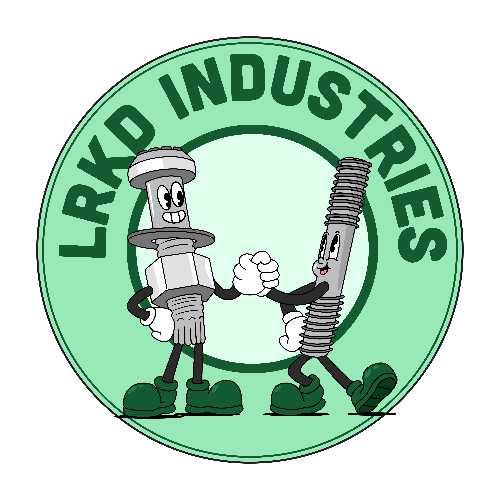Why Helical Foundations are Revolutionizing Construction
Imagine installing a foundation in a quarter of the time required for conventional concrete foundations, without having to deal with weather delays, lengthy excavation, or curing periods. Does it sound too nice to be real? Introducing helical foundations, the revolutionary technique that is revolutionizing the way we fasten buildings to the earth.
Helical foundations are incredibly effective, strong, and adaptable, whether you're working on utility poles, light poles, or manufactured structures. Why should you choose them over conventional concrete, though, and how do they operate? Let's get started.
What are Helical Foundations?
Helical foundations are steel anchoring systems that are screwed into the ground; they do not require anchor bolts, rebar, or concrete. Deep penetration and maximum load-bearing capability are ensured by the helical plates welded along the shaft of high-strength steel pipes.
Helical foundations are the best option for projects requiring speed, flexibility, and long-term durability since they can be used right away after installation, unlike standard foundations that depend on curing times and extensive excavation.
Key Benefits of Helical Foundations
1. Faster Installation, Immediate Use
One of the biggest advantages of helical foundations is that they install in a fraction of the time compared to concrete foundations. Since they don’t require curing, you can install poles or structures immediately after installation.
2. Cost-Effective and Minimal Job Site Cleanup
By eliminating the need for extensive excavation, concrete pouring, and curing, helical foundations reduce total installation costs. Plus, since there’s little to no job site cleanup, your project stays on schedule and within budget.
3. No Impact from Harsh Weather
Unlike concrete, which requires ideal weather conditions to set properly, helical foundations can be installed year-round—even in freezing temperatures or rainy conditions.
4. Environmentally Friendly
Helical foundations cause minimal soil disturbance, which makes them a greener alternative. Plus, they can be removed and reused, further reducing environmental impact.
5. Superior Load-Bearing and Corrosion Resistance
Thanks to ASTM A123 galvanization, helical foundations offer outstanding corrosion protection, ensuring long-term durability in various soil conditions.
Technical Specifications of Helical Foundations
|
Feature |
Details |
|
Material |
High-strength steel pipe and structural steel plate |
|
Diameter Options |
4”, 6”, 8”, 10”, 12” |
|
Length Range |
3’ – 16’ (custom lengths available) |
|
Bolt Types |
High-strength bolts, all-thread rods, carriage bolts |
|
Holes for Secure Connection |
Drilled, slotted, or tapped holes for flexibility |
|
Corrosion Protection |
Galvanized per ASTM A123 |
|
Special Features |
Wiring slots available if needed |
Applications of Helical Foundations
Utility and Light Poles
Helical foundations are widely used in the installation of utility and light poles due to their ability to provide a plumb foundation without the need for concrete. The built-in pilot point ensures concentricity during installation, resulting in a stable and secure structure.
Telecommunications Towers
For remote or hard-to-access locations, helical foundations offer a fast and reliable foundation solution without requiring heavy machinery for concrete pouring.
Solar Panel Farms
Since solar panel installations often require rapid deployment, helical foundations allow for immediate installation without waiting for concrete to set.
Highway and Traffic Signage
Government agencies and contractors favor helical foundations for traffic signs and highway structures due to their speed of installation, cost savings, and durability.
Temporary Structures
Because helical foundations can be removed and reused, they are ideal for temporary installations, such as event structures, construction site offices, and mobile towers.
How Helical Foundations Compare to Traditional Concrete Foundations
|
Feature |
Helical Foundations |
Concrete Foundations |
|
Installation Time |
Hours |
Days to weeks (due to curing) |
|
Weather Dependence |
Can be installed in any weather |
Delays due to cold or rain |
|
Soil Disturbance |
Minimal |
High |
|
Cost |
Lower overall cost |
Higher material & labor costs |
|
Load-Bearing Strength |
High |
High |
|
Environmental Impact |
Reusable, minimal excavation |
Higher carbon footprint |
How to Choose the Right Helical Foundation for Your Project
When selecting a helical foundation, consider the following:
Load requirements – Different diameters and lengths are available to accommodate varying load capacities.
Soil conditions – Some soil types may require deeper penetration or multiple helices for stability.
Application type – Light poles, solar panels, utility poles, and signage may require different specifications.
Corrosion resistance – Ensure the foundation is galvanized for long-term durability in harsh environments.
Installation Process: What to Expect
-
Site Evaluation – Engineers assess the soil type and load requirements.
-
Drilling & Driving – The helical foundation is driven into the ground using specialized machinery.
-
Final Adjustments – The structure is secured using high-strength bolts or threaded rods.
-
Immediate Installation – Poles, signs, or structures are mounted immediately, with no wait time.
Helical Foundation Solutions
Save your crew valuable hours on the job site! Whether you're reinforcing existing structures or starting from the ground up, our team provides expert support and guidance on helical foundation systems tailored to your project's specifications. This service is perfect for construction professionals seeking efficient, reliable ground anchoring without guesswork.
Contact LRKD Industries now for dependable, precision-engineered solutions!
👉 Submit your project details today for a FREE consultation on helical foundation planning and implementation.
📍 Address: 98 N Industry CT, Deer Park, NY 11729, US
📞 Phone: +1 646-880-6778
📧 Email: info@lrkdindustries.com
We can also deliver output files in ".dwg" format compatible with Tekla—ensuring seamless coordination with your engineering and fabrication workflows.
For more information about our products and engineering services, click here.
When stability matters most, trust in proven foundation systems that don’t compromise.


